- Home
- Instructions
- Tweeter repair
- Making a sealing ring for (RCF) diaphragm
Making a sealing ring for (RCF) diaphragm
Some tweeters use a 'sealing ring' between the diaphragm and the magnet. This ring seals everything airtight and can dampen reflections. The ring is often made of foam that decays over time. The ring is easy to make yourself and in this way a damaged sealing ring can be replaced with a homemade new ring of foam.
This is a new "RCF membrana X TW116 M 39". The diaphragm is so-called NOS (New Old Stock) but even in the packaging the sealing ring has decayed during storage.
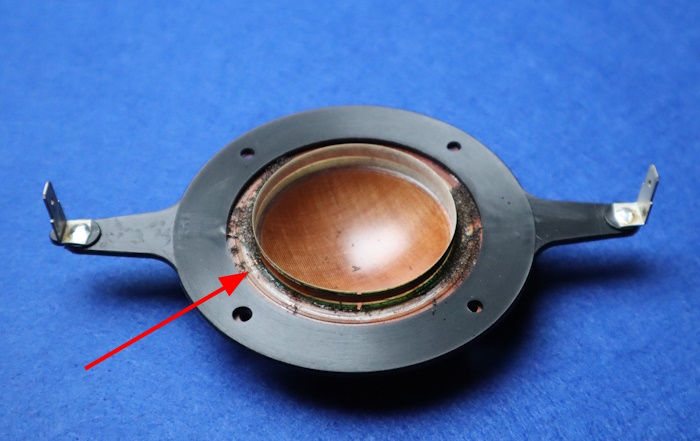
Before a new sealing ring can be placed, the remains of the decayed ring must first be removed. A number of things must be taken into account:
- Place the diaphragm in such a way that the dome cannot dent.
- Work extremely carefully in the area of the connection wires (red circles). If one of these wires breaks, the diaphragm will no longer work.
- Work carefully near the voicecoil of the diaphragm.
For cleaning, the first step is to use a brush. With a soft brush, the remains of the old decayed ring can be wiped away. Remains that cannot be removed with a (dry) brush can often be wiped away with a cotton swab with some alcohol.
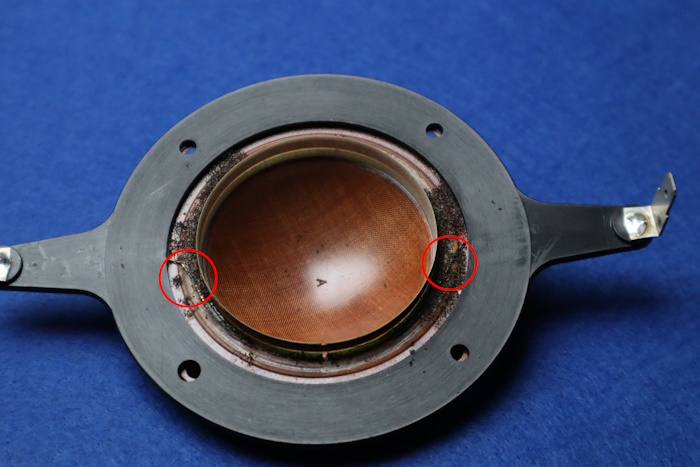
The clean RCF diaphragm, the remains of the old sealing ring have been removed. Now the inner and outer dimensions of the new sealing ring to be made can be measured.
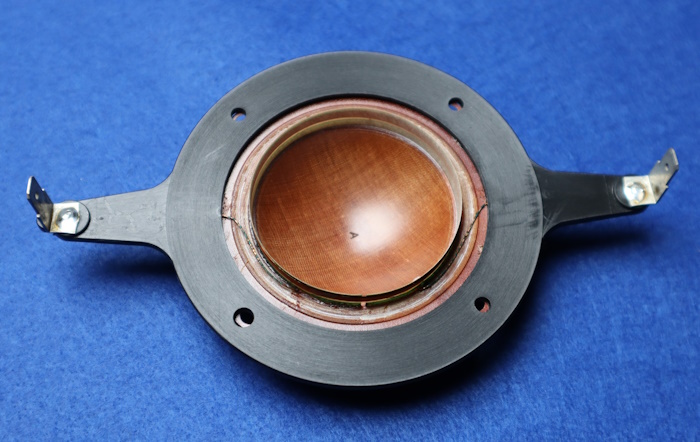
A new ring can be cut (or clipped) from a piece of special foam with a knife. Take a look in the cupboard: there may be a glass with the correct diameter that can be used for the inner or outer dimensions of the new sealing ring. Such a glass makes (precise) cutting a lot easier. No glass? Then first mark the outer dimensions of the new sealing ring with a compass, then the inner dimensions, and cut or clip the ring from the piece of foam.
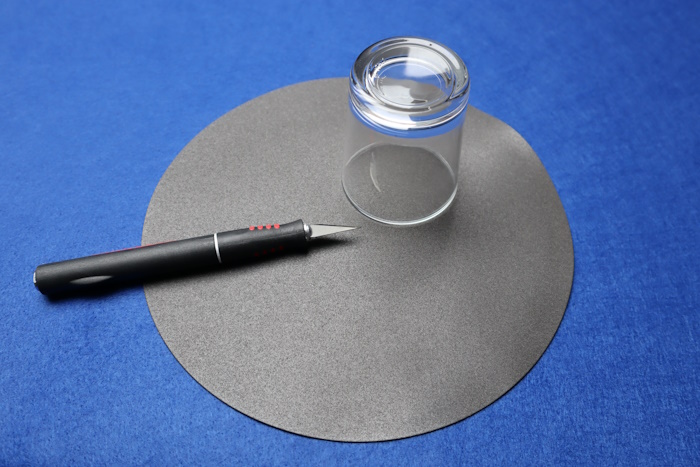
The new, homemade, sealing ring can now be glued onto the diaphragm. Apply glue to one side of the ring...
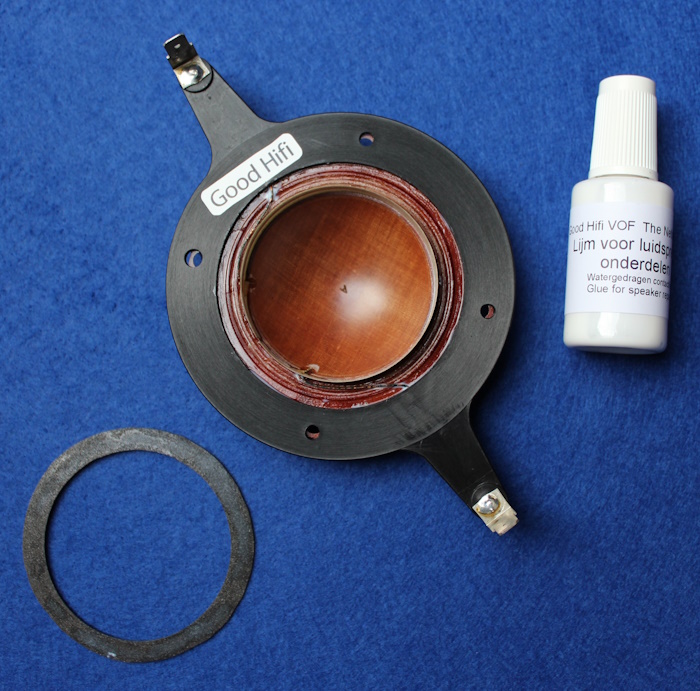
...and glue the new sealing ring between the diaphragm frame and the diaphragm coil. Make sure the diaphragm is not clamped too tightly against the coil, as this can restrict movement and negatively affect sound quality.
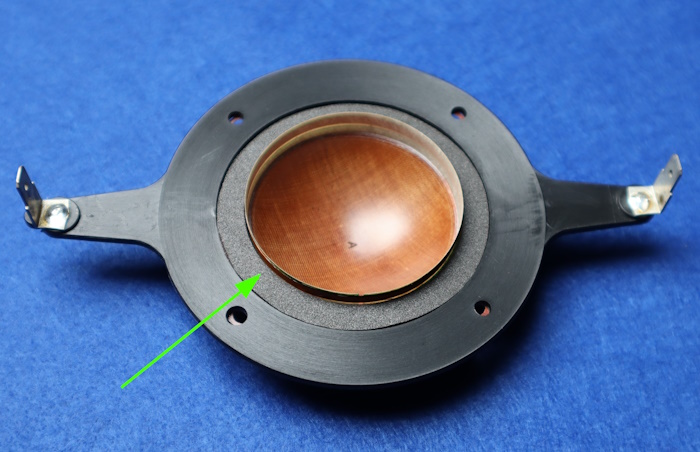
© Good Hifi VOF


 Nederlands
Nederlands
 Deutsch
Deutsch